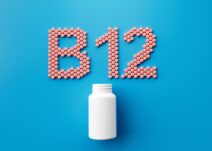What will it take to convince Americans that they have the power to own their health outcomes? We know there is enormous concern about the future and our ability to stop COVID-19. Experts assert we’ll have a vaccine in 12 to 18 months, a lofty goal that has never before been achieved in such a short timeline, and it could leave consumers more anxious as they consider the impact of shortcutting the research and testing process. Another often-referenced line of defense is herd immunity; an indirect protection from infection that occurs once 70-80% of the population has become infected and carries antibodies from the disease. The third option is using testing to flatten the curve. There is grave concern that we aren’t testing enough of the population. We aren’t identifying who is infected, but asymptomatic. No doubt, testing is of vital importance. And equally important is a proactive, consistent commitment to building a healthy immune system; one that requires regular testing of one’s nutrient levels. It can serve as the best action plan for recovery from the pandemic. Testing, especially for vitamin D, is the most effective, efficient and powerful way to place meaningful prevention in the hands of the public.
The Centers for Disease Control and Prevention has spoken! They aretrackingthe underlying health conditions of COVID-19. Diabetes mellitus, chronic lung disease, and cardiovascular disease rank as the top three high-risk diseases associated with increased severity or complications of COVID-19, as compared to persons without these conditions. The CDC has documented that these three pre-existing conditions are more detrimental risk factors than being a current or former smoker. Vitamin D deficiencies have been linked to all three of the top diseases most affected by COVID-19.
The reality is, you just can’t eat your way to a healthy vitamin D level. Currently 40-75% of the world’s population and nearly 90% of all Americans are vitamin D deficient. The primary source of vitamin D is sunshine. Absorbing enough vitamin D has always been challenging for Americans who prioritize skin protection over sun exposure, but now with stay-at-home orders, getting the amounts you need is next to impossible. The song we’ve been singing for years is now grabbing headlines. In the words of former CDC Chief Dr. Tom Frieden, “Vitamin D supplementation reduces the risk of respiratory infection, regulates cytokine production and can limit the risk of other viruses such as influenza. A respiratory infection can result in cytokine storms—a vicious cycle in which our inflammatory cells damage organs throughout the body—which increase mortality for those with COVID-19.”
Vitamin D supplementation is an inexpensive, simple way to resolve deficiencies if taken in the right amounts, which can only be determined through testing.
It’s time the whole world comes to understand the research linking chronic disease to low vitamin D levels. According to GrassrootsHealth D*action project, 48 high-profile vitamin D researchers from around the globe agree that 40-60 ng/ml (100-150 nmol/L) is the ideal range for vitamin D that can help reduce disease by 20-50% or more. The appropriate intake depends on the individual’s age, race, lifestyle and latitude of residence. The latest Institute of Medicinereport indicates 10,000 IU/day is considered the NOAEL (no observed adverse effect level) and 4,000 IU/day is safe for adults age 19 and older. When I first measured my vitamin D level it was 38 ng/ml. I wasn’t taking any vitamin D. In the fall, I increased my now-normal daily consumption from 5,000 IUs to 10,000 IUs, and my level is 79 ng/ml.
Knowing your levels is essential. If your doctor says your vitamin D level is OK, it’s most likely below that 40ng/ml threshold. Now is the time totest your level at home, or perhaps dig it up from your online medical records. Once you know your vitamin D level, you can use a vitamin D calculator to estimate how much vitamin D is needed to reach your desired target level. Then be sure to test again in six months.
For the past five years, Organic & Natural Health has partnered and helped fund nutrient research with GrassrootsHealth. This now includes combined testing of vitamin D, omega-3 and magnesium levelsalong with educational information for participants on how their nutrient levels compare with others from around the world so they can be empowered to improve their personal health. The GrassrootsHealth D*action project serves as a model for public health action on vitamin D and is a vehicle to drive nutrient research to show how it has a direct impact on disease prevention. Never has this work been more important given the current pandemic. How the afflicted will recover from COVID-19, your friends and family, our health care front line, and the essential staff that keep our country running and fed, has a direct reflection on their health status. It is immune system strength that battles off underlying health conditions. Testing our nutrient levels is critical to knowing where we fall along the scale of healthy to compromised, for this pandemic or any health crisis. At Organic & Natural Health, we are all taking the test. Will you join us? Knowyour levelsand live life well.
Note: The views and opinions expressed here are those of the author(s) and contributor(s) and do not necessarily reflect those of the publisher and editors of WholeFoods Magazine. Information in this article is intended for educational and scientific purposes only. It is not intended as medical or nutritional advice for the treatment or prevention of disease. For medical advice, consult a health care practitioner.









